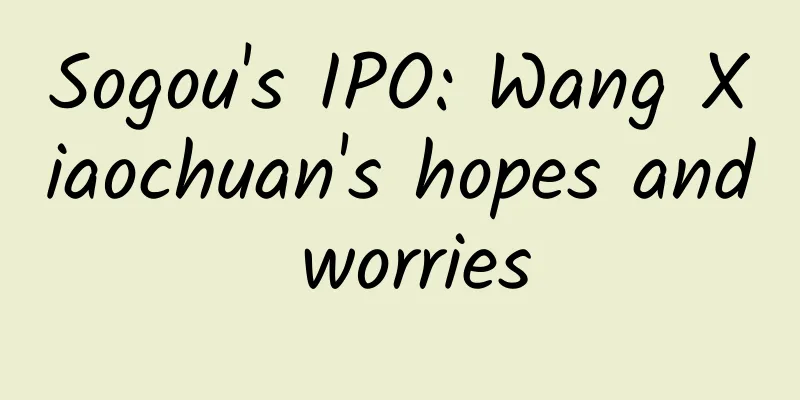Can Xiaomi avoid the death spiral after the sharp drop in shipments?

|
Lei Jun said at a press conference a few days ago that Xiaomi Mi 6 is the pinnacle of Xiaomi's seven-year history, and the reason he gave was mostly performance indicators. This seems to mean that the sharp drop in Xiaomi’s shipments in the past few years was simply because it did not produce top-notch mobile phones? According to IDC data, Xiaomi's smartphone sales were among the top three in the world in 2015, but in 2016, they plummeted by 36% and fell to fifth place. No wonder there is a question on Zhihu with nearly a million views: Why is Xiaomi's smartphone sales plummeting even though it is so cheap? The simplest logic is that the smartphone market itself is failing. But what is the truth? As can be seen from the figure below, the overall shipments of smartphones have been increasing over the past two years. Therefore, we should look for the reasons from Xiaomi itself, rather than attributing it to the overall market environment. Moreover, in fact, from a more fundamental point of view, the logic of this question on Zhihu itself is very strange, too many people think that "if it is sold cheaply, the sales volume should not be too bad", as if if it is sold cheaply, more users will be willing to pay for it. BlackBerry, once a dominant player, thought the same, and because of this, it ultimately could not escape the fate of death. BlackBerry's death spiral Before the recession, BlackBerry revenue trended like this: In the above figure, the blue line is revenue and the red line is net profit. It can be seen that before the recession, BlackBerry's revenue trend was relatively perfect. This is a report that almost every CEO dreams of. However, since 2011, BlackBerry's revenue has gradually declined from 15 billion, and by February 2017, its market share officially fell to 0%. From then on, there were no more BlackBerry phones in the world. The death of BlackBerry was not without warning. Just like iPhone has Apple ID, BlackBerry also has its own BlackBerry Service. In 2006, for every phone sold by BlackBerry, 0.7 people registered for BlackBerry Service, becoming its new users. This number dropped to 0.37 in 2011 - in other words, at this time, BlackBerry had to sell 2.7 phones to get a new user. What this actually implies is that the vast majority of BlackBerry phones were bought by old customers who had already registered. (BlackberryService registration ratio chart) Why are there fewer new users? The reason is simple: BlackBerry no longer has any exciting new products. At the same time, smartphones such as the iPhone and Android are attracting more new users while snatching away old BlackBerry users. As a listed company that needs to give investors a satisfactory answer, what can BlackBerry management do? One easy decision is to cut prices. In order to maintain profits, BlackBerry can only continue to cut costs while cutting prices, and the first thing to be cut is R&D expenses. This is the root cause of the decline of BlackBerry products. Once a company's product sales growth slows down, or even reaches the point where it has to rely on price cuts to boost sales, the company may seem to still have low-end markets to tap, but in fact it is just drinking poison to quench thirst. Because price cuts can only stimulate temporary sales, but cannot create more effective demand. It is difficult for a person who originally had no interest in the product to become a new fan just because the price has dropped. This also explains why some CEOs optimistically believe that they have opened up an incremental market and entered a new "blue ocean" after seeing the increase in sales after price cuts. In fact, they are just accelerating the consumption of the potential user base as a stock. The result of all this is that the product becomes worse and worse, and new users stay away. This is BlackBerry's death spiral. Have you noticed that if we only focus on price instead of developing new products that will amaze people, even if it can bring short-term results, what about the future? Kill the cash cow Now that the BlackBerry model has declared bankruptcy, how can companies whose products are stuck in a growth stagnation phase break out of the "death spiral"? We can get inspiration from Apple's story. Many people are familiar with the concepts of the Boston Matrix and cash cow. If we consider the two dimensions of sales growth rate and market share, we can divide all products into the following four quadrants: There are two most important parts in this picture: the cash cow in the lower left corner and the question mark in the upper right corner. The cash cow indicates that the current market share of the product is quite high, but the growth rate is slow. This is often the stage of maturity and sustainable maximum profit. It represents the current glory of a company. The question mark means that although the current market share of this product is very small, the growth rate is extremely high and it may become a hit in the future. It represents the possible future of a company. Let's take a look at the revenue comparison curves of iPhone and BlackBerry products: In 2007, BlackBerry was very successful in the mobile phone market. At that time, BlackBerry phones were the company's cash cows, and the management made huge profits from them. And judging from the profitability of the iPhone at that time, it was not qualified to rival the giant BlackBerry. In fact, Apple was not in such a bad situation at that time, because when Apple launched the iPhone in 2007, the iPod was their real cash cow. But Apple still resolutely decided to place its next bet on the iPhone. As Jobs said, "If you don't disrupt yourself, someone else will disrupt you." He led the team to integrate all the functions of the iPod into the iPhone, personally killing his company's "cash cow". 'Our core philosophy is not to be afraid of cannibalism. If we don't do it, someone else will. The Macintosh killed the Apple II. We knew the iPhone would cannibalize some of the iPod's business, and that didn't worry us. We also knew the iPad would cannibalize the Mac, but that wasn't a problem either. ' - Tim Cook So did you notice? What Apple did that BlackBerry didn’t do was to use the cash cow capital to research and development and solve the question marks in the matrix. These question marks represent products that burn a lot of cash but show strong and rapid growth potential, although they have not yet contributed much profit. However, these products are the root of the birth of more cash cows in the future. In other words, the only reason for the existence of cash cows is for the birth of future cash cows. This is the key to breaking the death spiral and building a sustainable company. Xiaomi’s Myth and Future Let’s talk about Xiaomi again. At this stage, Xiaomi’s cash cow is naturally the mobile phone business, and in order to save this cash cow, Xiaomi has made various attempts. For example, by sponsoring "The Debaters" and joining hands with Hatsune Miku, Xiaomi is trying to use marketing to allow its brand to reach more new users. In this way, many young people who are keen on online variety shows and the two-dimensional world may buy into it. In addition to developing online channels to reach more new users, offline channels are also a key focus of Xiaomi's layout. Since entering the World Trade Center on April 8, Xiaomi has opened more than 70 Xiaomi stores, and according to official statements, 1,000 offline stores will be opened in the next three years. Speaking of the value of offline channels, the fact that OPPO and vivo's annual shipments almost doubled in 2016 is enough to prove that this strategy is indeed feasible. However, mobile phone manufacturers who imitated the blue and green giants have once again made offline channels popular. At this time, no one can guarantee what the effect of Xiaomi Home entering the red ocean will be. It seems that Xiaomi's cash cow seems to be difficult to maintain. Can it save itself by creating the next cash cow like Apple and break BlackBerry's "death spiral"? It is possible, and the breakthrough point may very well be smart home. When Jack Ma was giving a lecture at Lakeside University, he once made this judgment: "In the future, all products without electricity will be personalized and customized; and all products with electricity will be intelligent, networked and digitized." If this is true, then the giants who have the potential to become the gateway in the future must have started the layout of smart home early. Who are they? In addition to Apple, it is Xiaomi. Very similar to the "Home" in the iOS system, Xiaomi also has a "Mijia" App. At the end of March this year, when the "Mijia" brand was established for one year, its official Weibo gave a set of data: From the above picture, we can see that this smart control platform called "Mijia" had a total of more than 50 million activated App devices at the time; an average of more than 5 million devices online at the same time per day; and an average of 12 million automated scenarios executed per day. With this development momentum, if it is not for traditional home appliance giants like Gree and Midea, Xiaomi, which only sells its own products and products of its ecosystem chain manufacturers, will find it difficult to find competitors in the home appliance industry in the future. Perhaps for Xiaomi, the next cash cow will appear here. As a winner of Toutiao's Qingyun Plan and Baijiahao's Bai+ Plan, the 2019 Baidu Digital Author of the Year, the Baijiahao's Most Popular Author in the Technology Field, the 2019 Sogou Technology and Culture Author, and the 2021 Baijiahao Quarterly Influential Creator, he has won many awards, including the 2013 Sohu Best Industry Media Person, the 2015 China New Media Entrepreneurship Competition Beijing Third Place, the 2015 Guangmang Experience Award, the 2015 China New Media Entrepreneurship Competition Finals Third Place, and the 2018 Baidu Dynamic Annual Powerful Celebrity. |
Recommend
When birds fly south, which “South” are they heading to?
Author: Yunhai Science Popularization The article...
Tips for creating popular titles on Xiaohongshu!
Write a good title and your traffic will more tha...
Farewell to "Sophia": Observatories cannot rely solely on romantic feelings
What is the first thing that comes to your mind w...
Apple announces the official launch of App Light Code
Apple announced to developers yesterday that it h...
How to get big exposure through content at zero cost?
Marketing and promotion are always the pain point...
How much does it cost to use China Mobile's 10,000M bandwidth exclusively?
How much does it cost to use China Mobile's 1...
Analysis of Himalaya audio content operations!
The author has conducted an in-depth analysis of ...
The sincere love of the grass and the rolling green shade (Part 1) - You "fern" would never have thought that the "fern scholars" are also so "involuted"
Produced by: Science Popularization China Author:...
Android is everywhere and invading Windows
Windows in the desktop era and Android in the mob...
Some mushrooms make people see villains, and some mushrooms make people go to jail.
Audit expert: Wang Guoyi Postdoctoral fellow in N...
Big reversal, iOS15.6 is better optimized than iOS14.8, and the battery life improvement is very satisfactory. I recommend upgrading
The official version of iOS15.6 was released last...
How can traffic be doubled relying solely on content? It's time to think about your KPIs!
The golden age of short videos Why do we say that...
This is how you write copy with a good conversion rate!
These are the problems that have always troubled ...
OTT advertising: Compared with scale, we should pay more attention to the rise of living room consumption scenarios
As an emerging advertising channel, the scale of ...
WP ≠ Lumia
Since Microsoft officially released WP7, the WP c...









